Hollywood & The Cubs
As the nation gathers around the television this weekend to watch the Academy Awards, Just One Bad Century features some of the Cubs connections to Hollywood over the years.
BEFORE HOLLYWOOD
Essanay Studios 1907-1917
Not many people realize that Chicago was once the movie capitol of the world. That title lasted exactly one decade (1907-1917), and it was thanks to the movie studio known as Essanay Studios. The studio was located on Argyle Street in the Uptown neighborhood. The name “Essanay” comes from the initials of the studio’s founding partners: George Spoor and Bronco Billy Anderson. (Photo: Spoor on the left, Anderson on the right). At that time there was still quite a bit of open space to film in that neighborhood, and Essanay preferred to shoot outdoors if possible. They also built an indoor studio at that location. On the day the studio was opened (in 1907), the Cubs were in the midst of a magical season, on their way to their first World Series title. As the Cubs built one of the greatest dynasties in baseball history, Essanay was doing the same on Argyle Street. They had the world’s number one box-office star ( Charlie Chaplin), a glamor queen ( Gloria Swanson) and the most famous cowboy star in the world (“Bronco Billy” Anderson). Spoor was the businessman. He had run a news-stand and a film projector company. Two of his employees went on to start the Bell & Howell company, which made movie projectors. Chaplin left Essanay in 1916, which dealt a death blow to the company. A year later, the rest of the movie making world had moved to southern California for better weather (and year-round filming possibilities), and Essanay died a quick and painful death. By 1917, only the plain brick building on Argyle remained as a reminder of this era. Essanay studios was only operating in Chicago for eleven years, but in those years, the Cubs were in the World Series three times, and began playing their games in what is now known as Wrigley Field. It was a critical era in Cubs and Chicago history.
THE NOMINEES
Phillip Epstein
Phillip G. Epstein won an Academy Award for co-writing the screenplay for “Casablanca”, widely regarded by screenwriters as the best screenplay ever written. His grandson has chosen a different path. Theo Epstein is now the president of the Chicago Cubs. When Theo wrote the script for a Cubs World Series championship, he surpassed his grandfather’s incredible accomplishment.
###
Groucho Marx
The Marx family moved from New York to Chicago in 1909. For much of that time they lived in a large house at 4512 South Grand Boulevard (now called Martin Luther King Boulevard). The house is still there. The Marx Brothers (Gummo, Groucho, Harpo, Chico, and Zeppo) were already a traveling Vaudeville Act in April of 1917 when America entered World War I. They had been touring in the south when War was declared. But the war forced them to take drastic measures: they purchased a farm in LaGrange, Illinois. Their mother had heard that farmers were going to be exempt from military service, and she wanted to do whatever was necessary to keep her boys out the fight…even if it meant becoming farmers. This is the way Groucho Marx described his days on the LaGrange farm…”The first day we got up at 5 in the morning. The second morning we dawdled until 6. By the end of the first week we slept until noon, which gave us just enough time to catch the 1:07 train to Chicago to see the Chicago Cubs play.” They became regulars at Wrigley Field (then known as Cubs Park) during the World Series year of 1918. The Marx family moved back to New York in the fall of 1920 and a decade later they moved west to Hollywood. But the boys came back to Chicago often to perform. In 1930, the same year they filmed “Animal Crackers,” they also performed the stage version of the play with the same cast at Chicago’s new Civic Opera House. Each time they returned to Chicago, they made a pilgrimage to their old stomping grounds at Wrigley Field. They may have been the worst farmers in American history, but farming’s loss was the Chicago Cubs’ gain.
Groucho received an honorary Oscar in 1974
###
Bill Murray
He’s the ultimate Celebrity Cub fan. Born into a Cubs family, Bill Murray has never stopped following his favorite team. He’s been there during the good times (?) and bad, showing up to watch them at home and on the road. In 2007, he was there for every gruesome moment as the Cubs took a long time clinching their playoff spot. The Tribune interviewed him about his Cubs love at that time. He was asked about the ridiculous theory that the Cubs would cease being special if they ever actually won the World Series. “I don’t accept that (theory), because the Cubs have already won five World Series, and they are the Cubs. Would the Cubs be the Cubs if they lost the World Series? That’s sick thinking. You’ve got to watch out for people like that. I should be watching you. Maybe you want to talk to me later about what’s going on in your life.” In 2008, he was asked if the Cubs were cursed. He said…”That curse is over. Sam Sianis broke that curse awhile ago. They keep breaking that curse. It should be done, over with. I’ve stopped blaming myself for a Cubs loss. That’s a start. [laughs] I’m am not taking responsibility for those losses.” But then after they choked again, he had a hilarious cameo on Saturday Night Live, asking the political candidates if the Cubs will ever win it all. But Bill Murray’s finest Cubs hour probably came during the beginning of the 1987 season. After Harry Caray had a stroke, lots of celebrities filled in for him alongside Steve Stone in the TV booth. None of them had an appearance remotely as memorable as Murray. Chicago will always love Bill Murray. And Bill Murray will always love the Chicago Cubs.
Murray receivad a Oscar nomination for best actor for his role in Lost in Translation
###
Gary Sinise
He was born in Blue Island, but he grew up in Highland Park. As a young man he was one of the founders of the Steppenwolf Theatre in Chicago, but he really rose to fame playing the character Lt. Dan in the film Forrest Gump. But while we all knew he was from Chicago, with a birthplace like Blue Island, we couldn’t be sure if he was a Cubs fan or a Sox fan. The record over the past decade seems to have ended that speculation once and for all. In 2003, Gary was interviewed for the Cubs documentary “Chasing October,” and admitted something that surprised no one: He’s a die-hard Cubs fan. In 2004, Gary participated in the film “This Old Cub,” which told the gut-wrenching story of Ron Santo’s struggle with diabetes and his hopes for entry into Baseball’s Hall of Fame. Sinise recounted his memories of watching good ol’ #10 patrolling 3B for the Cubs in the sixties and early seventies. In 2009, he agreed to narrate the Cubs film “We Believe.” We believe, Gary. You are a true blue Cubs fan.
In 1994 he was nominated for an academy award for best supporting actor for his role in Forest Gump…
THE FILMS
42 (2013)
What do the Cubs have to do with the movie 42? The villain of the film, Kirby Higbe, was a former Cub. Higbe didn’t get a lot of playing time with the Cubs in parts of three seasons in Chicago, including the 1938 pennant winning year. The Cubs used him primarily out of the bullpen. They traded him in the 1939 season, and Higbe later became a two-time All-Star and 20-game winner with the Brooklyn Dodgers. He didn’t respond well to the arrival of Jackie Robinson in 1947, however, and was shipped off to Pittsburgh. Thanks to the movie he’ll forever be remembered as a villain. It’s probably a pretty accurate portrayal of Higbe, who grew up in South Carolina, and claimed to have developed his throwing arm by throwing rocks at black people.
###
A League of Their Own (1992)
Jimmie Foxx hit 534 career home runs, but unfortunatley for Cubs fans, only three of those home runs came with the Cubs, who picked him up one year after his last good season. He hit .190 with the team in 225 at-bats, and was released in 1944. He later managed one of the women’s teams during the war, and was the inspiration for the character played by Tom Hanks in “A League of Their Own.”
The movie was also partially filmed at Wrigley Field….
###
The Babe Ruth Story (1948)
The most famous moment of Babe Ruth’s career happened at Wrigley Field, so naturally the movie of his life has a scene at Wrigley. Of course this version is complete fiction (Babe didn’t really point, he didn’t really promise to hit one for a dying kid, and the Chicago fans did NOT cheer), but it is memorable. After all, he saved a young boy’s life.
###
The Blues Brothers (1980)
John Belushi often infused his work with references to the Cubs. On Saturday Night Live, he flipped “Cheesborgers” in a place eerily similar to the place that allegedly brought us the our World Series curse…the Billy Goat Tavern. Even more famously, in the classic film “The Blues Brothers,” Jake and Elwood say that their address is 1060 West Addison Street. When the band of moronic Nazis turn up at the brothers’ official address, they are none to pleased to discover what is really there…Wrigley Field. (Clip below NSFW)
###
The Break Up (2006)
Vince Vaughn was raised in suburban Buffalo Grove and Lake Forest, and during his formative childhood years was infected with the Cubs virus. Vaughn became a movie star when the film “Swingers” came out, and followed that up with comedy classics like “Old School,” “Dodgeball,” and “The Wedding Crashers.” In 2005-2006, he co-wrote, produced, and starred in the movie “The Break Up” (with Jennifer Aniston) and insisted that it be filmed in Chicago. The opening scene in the film actually takes place at Wrigley Field. During the filming, Vaughn and Aniston became an item, and People Magazine reported that they liked to hang out at Wrigley Field together…
“Now when Vaughn visits home, he is more likely to catch a Cubs game with Aniston, as they did on Memorial Day, than hit the singles’ scene. Says Tim Juliusson, owner of the Holiday Club, where Vaughn took Aniston last summer: “They’re in couples-mode now.”
That didn’t last long, but his love affair with the Cubs and Chicago remains strong. Whenever he comes back home to Chicago, he’s sure to visit Wrigley Field to watch his favorite team play. He still sings Take Me Out to the Ballgame at least once a year. He may be a Hollywood superstar, but Vince Vaughn will also forever be what he was growing up in Buffalo Grove and Lake Forest. A Cubs fan. (Although he does order ketchup on his hot dog in this scene. That’s a little disturbing)
###
Elmer the Great (1933) and Alibi Ike (1935)
~Joe E. Brown’s name isn’t remembered by many people today, but he was an actor, comedian, and baseball nut. He was also one of the biggest movie stars in America during the 1930s. He made his mark in a series of baseball movies, and in his two biggest box office hits (“Elmer, the Great” and “Alibi Ike”) he portrayed fictional players on the Chicago Cubs. Both of those films were written by the great baseball writer Ring Lardner, and filmed in LA’s Wrigley Field. Brown called the character of Elmer his all-time favorite: a lovable, walking, talking, egocentric braggart. Elmer also does something in the movie that we can only dream of witnessing…he hits a grand slam to win the World Series for the Cubs. Several real-life Cubs were in that movie too: Babe Herman, Larry French, Tuck Stainback, and the man who allegedly served up the pitch for Babe Ruth’s called shot: Charlie Root. In his next baseball movie, “Alibi Ike,” Brown played another Chicago Cubs player, pitcher Francis X. Farrell. They called him Alibi Ike because he had an excuse for everything. One of his famous lines: “I coulda won more than 30 games last year, but I had malaria half the season.” Brown’s Ike is a clowning excuse maker that forgets what made him who he is as he pursues his rookie season with the Chicago Cubs. But, like all of Brown’s characters, Ike has a heart of gold, and eventually gets back together again with his estranged girlfriend (Olivia de Havilland). Ike realizes that she is more important to him than wearing a Cubs uniform, and it’s not until he realizes it that he fulfills his baseball potential.
###
Ferris Bueller’s Day Off (1986)
John Hughes grew up in Northbrook, and set many of his films in and around his hometown. Among them, the film “Ferris Bueller’s Day Off.” Among the famous locations featured in the movie; the Sears Tower, the Art Institute, the Board of Trade, and of course, Wrigley Field. The three friends catch a day game that day, and it was an actual Cubs game, not one recreated for the screen. The game took place on Wednesday, June 5, 1985 at Wrigley Field. The Cubs were hosting the Atlanta Braves, and the score was tied 2-2 in the top of the 11th inning with the Braves batting. Claudell Washington is batting against Lee Smith as Leon Durham holds Paul Zuvella on first base. (In the movie, the fry cook tells Mr. Rooney, who sees it on television, that the score at that point was 0-0.) The Cubs eventually lost that game in the 11th inning. Washington flied out for the first out of the inning. The batter after Washington was Rafael Ramirez and he hit a two run home run off Lee Smith to win the game.
###
Major League (1989)
The film is about the Indians, but it also has a Cubs connection. Several of the actors who appeared in the film attended a baseball academy run by former Cub Mickey Owen. Mickey led a fascinating life in and out of baseball. He was a four-time All-Star with the Brooklyn Dodgers during early 40s. Owen didn’t serve in the military during the war, he was called up AFTER the war, and missed the 1946 season. When he came back, he was one of the players who bolted to the Mexican league. This angered Commissioner Happy Chandler so much, he wanted to ban those players from the major leagues for life. Chandler eventually cooled off, and Owen was allowed to return in 1949. That’s when he joined the Cubs. Mickey was the starting catcher for a few incredibly bad Cubs teams. After his playing days were over, he became a scout, then formed a baseball academy. Among the graduates of that academy…Michael Jordan, Joe Girardi & Charlie Sheen. Sheen, of course, played the character Wild Thing. The real-life closer of the Cubs that year was also nicknamed Wild Thing–Mitch Williams.
###
The Natural 1984
Author Bernard Malamud was born in Brooklyn and was almost certainly not a Cubs fan, but he was inspired by a few players in Cubs history–namely Billy Jurges and Eddie Waitkus. Both of those Cubs players were shot by crazed fans–and Malamud wrote a novel about a great player who was shot by crazed fan. The film version of the book even has a memorable scene that takes place against the Cubs in Wrigley Field.
Also, the scene in The Natural featuring the “headshrinker” was almost certainly inspired by the Cubs hiring of baseball’s first sports psychologists, Coleman Griffith (in 1938). Griffith was a psychology professor at the University of Illinois (Urbana-Champaign) and was asked by PK Wrigley to do a complete psychological analysis of the Cubs for a project he called “Experimental Laboratories of the Chicago National League Ball Club.” The 1938 Cubs were a veteran team (average age: nearly 30), and with future Hall of Famers like Dizzy Dean and Tony Lazzeri on the roster, they were not exactly the prototypical audience for experimental psychological research. Griffith also didn’t help his cause with his analysis of the players. For instance, he used a very complex statistical model to show that Phil Cavaretta should be traded because he would never amount to anything. People made fun of Wrigley for using Griffith that year, but on the other hand, the Cubs did go to the World Series in 1938. Wrigley really wanted him to come back full-time for the 1939 season, but Griffith wanted to spend more time with his family in Urbana.
###
The Relic (1997)
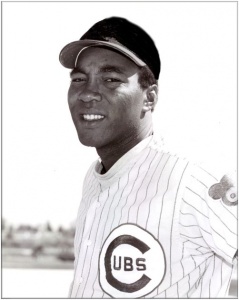 The story of Jophery Brown’s Cubs career is a short one. He pitched exactly two innings of one game on a Saturday afternoon, September 21, 1968, at Forbes Field in Pittsburgh. Brown pitched one more year in the minors after that, developed arm trouble, and retired from the game at the ripe old age of 24. But Jophery Brown certainly didn’t go quietly. Even during his minor league career he had dabbled in Hollywood, working as a stuntman for the television series “I Spy” (starring Bill Cosby). When his baseball career was officially over, he returned to Hollywood and was soon working steadily. Among his 117 feature films and television shows, Jophery Brown has done stunts for “Live and Let Die,” “Papillon,” “Smokey and the Bandit,” “Convoy,” “Foul Play,” “The Blues Brothers,” “Vacation,” “Scarface,” “To Live and Die in LA,” “Die Hard,” “Speed,” “Get Shorty” and all three “Lethal Weapon” movies. The many famous people on Jophery Brown’s “Brushes with Greatness” list are truly astounding, but if you asked him which celebrity impressed him the most, would it be one of those Hollywood legends with stars on the Walk of Fame, or would it be one of his teammates with plaques in Baseball’s Hall of Fame? Hall of Famer Billy Williams played left field behind him, Ron Santo was at third base, and Fergie Jenkins was a fellow member of Brown’s pitching staff. Mr. Cub himself, Ernie Banks, was the heart and soul of that 1968 team. Even the manager of the Cubs, Leo Durocher, was a future Hall of Famer. That’s not to say that Brown’s Hollywood career hasn’t been remarkable, because it surely has. But how many players in MLB history managed to play only two innings in the big leagues, and can still say they played for a Hall of Famer, played with four Hall of Famers, and pitched to another Hall of Famer? I’m betting Jophery Brown has told that story to his Hollywood friends more than a few times, and even they were impressed.
The story of Jophery Brown’s Cubs career is a short one. He pitched exactly two innings of one game on a Saturday afternoon, September 21, 1968, at Forbes Field in Pittsburgh. Brown pitched one more year in the minors after that, developed arm trouble, and retired from the game at the ripe old age of 24. But Jophery Brown certainly didn’t go quietly. Even during his minor league career he had dabbled in Hollywood, working as a stuntman for the television series “I Spy” (starring Bill Cosby). When his baseball career was officially over, he returned to Hollywood and was soon working steadily. Among his 117 feature films and television shows, Jophery Brown has done stunts for “Live and Let Die,” “Papillon,” “Smokey and the Bandit,” “Convoy,” “Foul Play,” “The Blues Brothers,” “Vacation,” “Scarface,” “To Live and Die in LA,” “Die Hard,” “Speed,” “Get Shorty” and all three “Lethal Weapon” movies. The many famous people on Jophery Brown’s “Brushes with Greatness” list are truly astounding, but if you asked him which celebrity impressed him the most, would it be one of those Hollywood legends with stars on the Walk of Fame, or would it be one of his teammates with plaques in Baseball’s Hall of Fame? Hall of Famer Billy Williams played left field behind him, Ron Santo was at third base, and Fergie Jenkins was a fellow member of Brown’s pitching staff. Mr. Cub himself, Ernie Banks, was the heart and soul of that 1968 team. Even the manager of the Cubs, Leo Durocher, was a future Hall of Famer. That’s not to say that Brown’s Hollywood career hasn’t been remarkable, because it surely has. But how many players in MLB history managed to play only two innings in the big leagues, and can still say they played for a Hall of Famer, played with four Hall of Famers, and pitched to another Hall of Famer? I’m betting Jophery Brown has told that story to his Hollywood friends more than a few times, and even they were impressed.
Jophery got one line in the movie “The Relic”…
###
The Rookie 1993
Henry was a 12-year old boy who became a big leaguer in the film “Rookie of the Year” and took the Cubs to the fictional championship. The character was played by Thomas Ian Nicholas, but other stars of the movie included Daniel Stern, John Candy, and Gary Busey.
###
Taking Care of Business (1990)
It’s no secret that Wheaton’s very own Jim Belushi was a big fan of the Chicago Cubs. Jim still comes to the ballpark every year to watch the beloved and sing “Take Me Out to the Ballgame.” But he’s also brought references to the Cubs to his work. In 1990’s “Taking Care of Business” he takes it to new heights–the Cubs go to the World Series. His character, Jimmy Dworski, gets out of prison to watch it. Here’s a little sample of the dialogue…
Jimmy Dworski: It’s the Cubs in the World Series – it’s a dream of mine, sir.
Warden Toolman: I know, I know,I know, I know, all right. I am not gonna stand in the way of anybody’s dream, Jimmy. I’ll tell you what:
Jimmy Dworski: What?
Warden Toolman: If I sink this putt, you can go. What do you think of that? Hmmm?
Jimmy Dworski: I think you should keep your head down, arms straight, drop your shoulder, concentrate, focus, think of the hole, GET the ball in the hole!
Warden Toolman: Smell the hot dogs now, Jimmy. The crack of the bat; the roar of the crowd; you can order your tickets now, Jim.
###
The Winning Team (1952)
Two years after his 1950 death, Grover Cleveland Alexander’s story was told in the film “The Winning Team,” starring Ronald Reagan. Grover Cleveland Alexander remains the only player in baseball history to be named after a president, and portrayed in a movie by a president.
The film featured a few Cubs. Peanuts Lowry had been a child actor, playing bit parts in silent films. Supposedly, actress Thelma Todd got him to perform with promises to buy him peanuts–which is where he got his nickname. Peanuts played with the Cubs from 1942-1949, and was a starter on the last Cubs World Series team, but he never totally lost the acting bug. He had a speaking part in “The Winning Team,” playing a pitcher that beans Ronald Reagan. Hank Sauer also had a role. At the time, he was the biggest star in Chicago. In 1952 he led the league in homers and RBI and was named the league’s Most Valuable Player. Hank was known for the big wad of chew he had in his mouth. Every time he homered, the left field faithful would shower him with his favorite brand. Sauer was so popular during his days in Chicago, the press referred to him as “The Mayor of Wrigley Field”. The last batter Ronald Reagan (as Grover Alexander) strikes out in “The Winning Team” is Hank (portraying a Yankee)…
Of course the biggest connection to the Cubs was not the player being portrayed (Grover Cleveland Alexander), it was the actor portraying him (Ronald Reagan). Reagan didn’t just grow up a Chicago Cubs fan. He owes much of his success to the team. Following college graduation, Reagan landed a job as a radio announcer at WOC in Davenport, Iowa and later at WHO in Des Moines. Radio was a brand new medium in those days and he discovered quickly that getting in on the ground floor was his ticket to the top. He began broadcasting Chicago Cubs baseball games he had never seen. His descriptions were largely improvised, and were based solely on telegraph accounts of games in progress. On June 7th, 1934, something dramatic happened. The telegraph went out. This is how Reagan described what happened next.
“There were several other stations broadcasting that game and I knew I’d lose my audience if I told them we’d lost our telegraph connections so I took a chance. I had (Billy) Jurges hit another foul. Then I had him foul one that only missed being a home run by a foot. I had him foul one back in the stands and took up some time describing the two lads that got in a fight over the ball. I kept on having him foul balls until I was setting a record for a ballplayer hitting successive foul balls and I was getting more than a little scared. Just then my operator started typing. When he passed me the paper I started to giggle – it said: ‘Jurges popped out on the first ball pitched.’”
Despite working in Iowa, he was voted as one of the top ten most popular baseball announcers in America. In 1937 his radio station sent him out to California to cover the Cubs in spring training. At that time they trained at Catalina Island. Reagan parlayed that trip into a screen test…and the rest, as they say, is history.
###
THE TELEVISION SHOWS
The Bob Newhart Show (1972-1978)
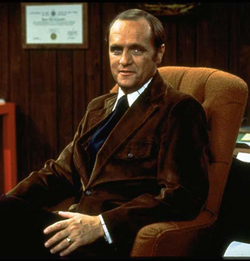 Bob Newhart was born and raised in Chicago. He went to St. Ignatius High School on the West Side, and grew up rooting for the Chicago Cubs. He got his big break when a Chicago DJ named Dan Sorkin played a funny tape Bob made to entertain his colleagues. Newhart was a 30-year-old accountant — still living at his parents’ house — when his star started to rise. He decided to switch careers and give comedy a go in the late ’50s. The Buttoned Down Mind Of Bob Newhart — which outsold Beatles albums in the ’60s — made him a superstar. When Bob got his first network sitcom, he naturally set the show in Chicago. His character’s home was this building at 5901 N. Sheridan on the city’s north side. His office was near the river on Michigan Avenue. And during one memorable episode, Bob counseled a struggling pitcher for the Chicago Cubs. Newhart has lived in LA for nearly 50 years now, but he remains a Chicago Cubs fan. One day backstage at a Tonight Show taping, John Belushi ran into Newhart and asked him if he remembered going to a Chicago Cubs game years earlier and autographing baseballs for kids between innings. “I was one of those kids,” said Belushi. Added Newhart, “Cubs lost.” In an interview with the Daily Herald in 2011, he recalled “I will always remember 1945 when I was 16 years old and the Cubs had won the national league pennant. I went and watched as the Cubs paraded down LaSalle Street.”
Bob Newhart was born and raised in Chicago. He went to St. Ignatius High School on the West Side, and grew up rooting for the Chicago Cubs. He got his big break when a Chicago DJ named Dan Sorkin played a funny tape Bob made to entertain his colleagues. Newhart was a 30-year-old accountant — still living at his parents’ house — when his star started to rise. He decided to switch careers and give comedy a go in the late ’50s. The Buttoned Down Mind Of Bob Newhart — which outsold Beatles albums in the ’60s — made him a superstar. When Bob got his first network sitcom, he naturally set the show in Chicago. His character’s home was this building at 5901 N. Sheridan on the city’s north side. His office was near the river on Michigan Avenue. And during one memorable episode, Bob counseled a struggling pitcher for the Chicago Cubs. Newhart has lived in LA for nearly 50 years now, but he remains a Chicago Cubs fan. One day backstage at a Tonight Show taping, John Belushi ran into Newhart and asked him if he remembered going to a Chicago Cubs game years earlier and autographing baseballs for kids between innings. “I was one of those kids,” said Belushi. Added Newhart, “Cubs lost.” In an interview with the Daily Herald in 2011, he recalled “I will always remember 1945 when I was 16 years old and the Cubs had won the national league pennant. I went and watched as the Cubs paraded down LaSalle Street.”
###
Curb Your Enthusiasm (2013)
Billy Buck had a great Cubs career, capped off by a batting title in 1980. When the Cubs traded him early in 1984, it was only because they had another player to take his place at first base…Leon Durham. Durham and Buckner, of course, share a common fate. Both of their outstanding careers will always be remembered for one little ball that went through their legs at the worst possible time. That is portrayed all too hilariously in this 2013 episode of Curb Your Enthusiasm (NSFW)
###
The Munsters & Mr. Ed (1965)
Right before Leo Durocher took over the Cubs, he was a coach with the Dodgers, and made several television appearances like this…
While he was with the Cubs, Leo continued to hang out with his Hollywood friends. He even set up a folding chair in the dugout in 1967 so his buddy Frank Sinatra could watch the game from there.
###
The Phil Silvers Show (1955-1959)
Steve Bilko was acquired by the Cubs on April 30, 1954. Bilko looked like a ferocious slugger. He was 6’1 and weighed anywhere from 230 and 260 pounds, and most of it was solid muscle, but he didn’t do much for the Cubs in 1954. They gave him 92 at bats with the big club before sending him down to the minors. At the time, the Cubs minor league team was in Los Angeles California, and that’s where Bilko became a cult hero. In three minor league seasons for the minor league LA Angels, Bilko hit .330 and slugged 148 home runs. He became a huge box office attraction, and got the attention of Hollywood. One Hollywood star, Phil Silvers, even named a television sitcom character after him. The name Bilko is now most associated with that memorable character in the “Phil Silvers Show,” but to Cubs fans, Bilko was just another player who could do well at the minor league level, but never in the big leagues. They traded him to the Cincinnati Reds after the 1957 season.
###
Punky Brewster (1984)
During the Cubs division winning season of 1984, an entire episode revolved around attending a Cubs playoff game.
###
The Rifleman 1958-1963
The physically imposing 6’5″ Chuck Connors played first base for the Cubs in 1951 and hit a whopping two home runs in 200 at bats, not exactly the kind of power you want from a big first baseman. That performance earned him a trip back to the minors. Luckily for him, the Cubs minor league team at the time was in Los Angeles. While he was playing in the Cubs minor league system he got a bit part in the movie “Pat & Mike” (starring Spencer Tracy–1952). That led him to quit baseball for good and become a full-time actor. By 1958, he was starring in “The Rifleman,” which aired until 1963. He also starred in Old Yeller, Soylent Green, and Roots, and is arguably the greatest Cubs actor of all-time (other than Sammy Sosa during his “corked bat” press conference). (Photo: Topps 1952 Baseball Card)
###
Undercover Boss (2010)
Tom Ricketts is the main owner of the Cubs, but his siblings are also part of the team. One of them, little brother Todd, was once on the show “Undercover Boss”. The entire episode takes place at Wrigley Field.




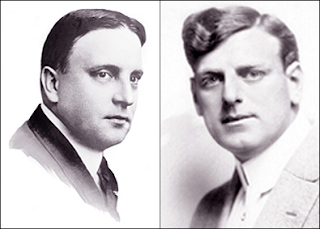
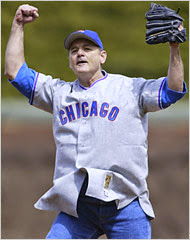
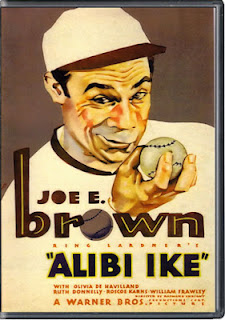

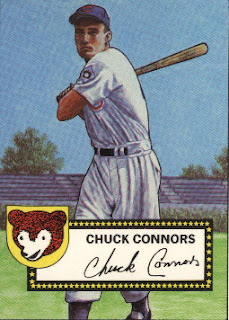

OK… really nice website. I love all the cubs info and like you probably grew up on the near north side.
One question. How did you upload the Ferris Bueller’s Day Off part? Ferris was actually in Left field at Wrigley in the movie. But your scenes are all backwards. I am thinking it is just the film turned over as the whole scene appears backward.
Just a big fan of the Cubs and of the movie.
Keep up the great work on just one bad century.
Best of Luck, Dan O’